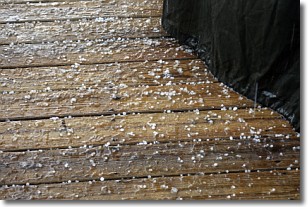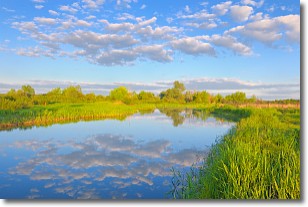Weather Alert in Missouri
Flood Warning issued June 7 at 9:10AM CDT until June 8 at 10:00PM CDT by NWS Springfield MO
AREAS AFFECTED: Jasper, MO
DESCRIPTION: ...The Flood Warning is extended for the following rivers in Missouri... Roubidoux Creek Near Waynesville affecting Pulaski County. James River near Boaz affecting Stone and Christian Counties. Spring River at Carthage affecting Jasper County. Sac River near Caplinger Mills affecting Cedar County. ...The Flood Warning continues for the following rivers in Missouri... Current River near Powder Mill affecting Shannon County. Osage River at Taberville affecting St. Clair and Vernon Counties. Big Piney below Fort Leonard Wood -East Gate affecting Pulaski County. Little Osage River near Horton affecting Vernon County. Marmaton River near Nevada affecting Vernon County. ...The Flood Warning is cancelled for the following rivers in Missouri... Jacks Fork at Alley Spring affecting Shannon County. For the Roubidoux Creek...including Waynesville...Minor flooding is forecast. For the Big Piney River...including Fort Leonard Wood - East Gate... Minor flooding is forecast. For the James River...including Galena, Boaz...Minor flooding is forecast. For the Little Osage River...including Fulton, Horton...Minor flooding is forecast. For the Spring River...including Carthage, Waco, Baxter Springs... Minor flooding is forecast. For the Marmaton River...including Fort Scott, Nevada...Minor flooding is forecast. For the Osage River...including Taberville...Minor flooding is forecast. * WHAT...Minor flooding is forecast. * WHERE...Spring River at Carthage. * WHEN...Until late tomorrow evening. * IMPACTS...At 10.0 feet, minor flooding occurs at the gage site. Flood waters impact State Highway 37 east of Carthage between Avilla and Reeds. * ADDITIONAL DETAILS... - At 8:45 AM CDT Saturday the stage was 9.9 feet. - Bankfull stage is 10.0 feet. - Forecast...The river is expected to rise above flood stage late this morning to a crest of 10.1 feet this afternoon. It will then fall below flood stage late this evening. - Flood stage is 10.0 feet. - http://www.weather.gov/safety/flood
INSTRUCTION: Turn around, don't drown when encountering flooded roads. Many flood deaths occur in vehicles. Additional information is available at www.weather.gov. The next statement will be issued this morning at 1015 AM CDT.
Want more detail? Get the Complete 7 Day and Night Detailed Forecast!
Current U.S. National Radar--Current
The Current National Weather Radar is shown below with a UTC Time (subtract 5 hours from UTC to get Eastern Time).

National Weather Forecast--Current
The Current National Weather Forecast and National Weather Map are shown below.

National Weather Forecast for Tomorrow
Tomorrow National Weather Forecast and Tomorrow National Weather Map are show below.

North America Water Vapor (Moisture)
This map shows recent moisture content over North America. Bright and colored areas show high moisture (ie, clouds); brown indicates very little moisture present; black indicates no moisture.

Weather Topic: What is Sleet?
Home - Education - Precipitation - Sleet
 Next Topic: Snow
Next Topic: Snow
Sleet is a form of precipitation in which small ice pellets are the primary
components. These ice pellets are smaller and more translucent than hailstones,
and harder than graupel. Sleet is caused by specific atmospheric conditions and
therefore typically doesn't last for extended periods of time.
The condition which leads to sleet formation requires a warmer body of air to be
wedged in between two sub-freezing bodies of air. When snow falls through a warmer
layer of air it melts, and as it falls through the next sub-freezing body of air
it freezes again, forming ice pellets known as sleet. In some cases, water
droplets don't have time to freeze before reaching the surface and the result is
freezing rain.
Next Topic: Snow
Weather Topic: What are Stratocumulus Clouds?
Home - Education - Cloud Types - Stratocumulus Clouds
 Next Topic: Stratus Clouds
Next Topic: Stratus Clouds
Stratocumulus clouds are similar to altocumulus clouds in their
fluffy appearance, but have a slightly darker shade due to their additional mass.
A good way to distinguish the two cloud types is to hold your hand out and measure
the size of an individual cloud; if it is the size of your thumb it is generally
an altocumulus cloud, if it is the size of your hand it is generally a
stratocumulus cloud.
It is uncommon for stratocumulus clouds to produce precipitation, but if they do
it is usually a light rain or snow.
Next Topic: Stratus Clouds
Current conditions powered by WeatherAPI.com




